How To Soothe A Cat Without Pushing Their Boundaries
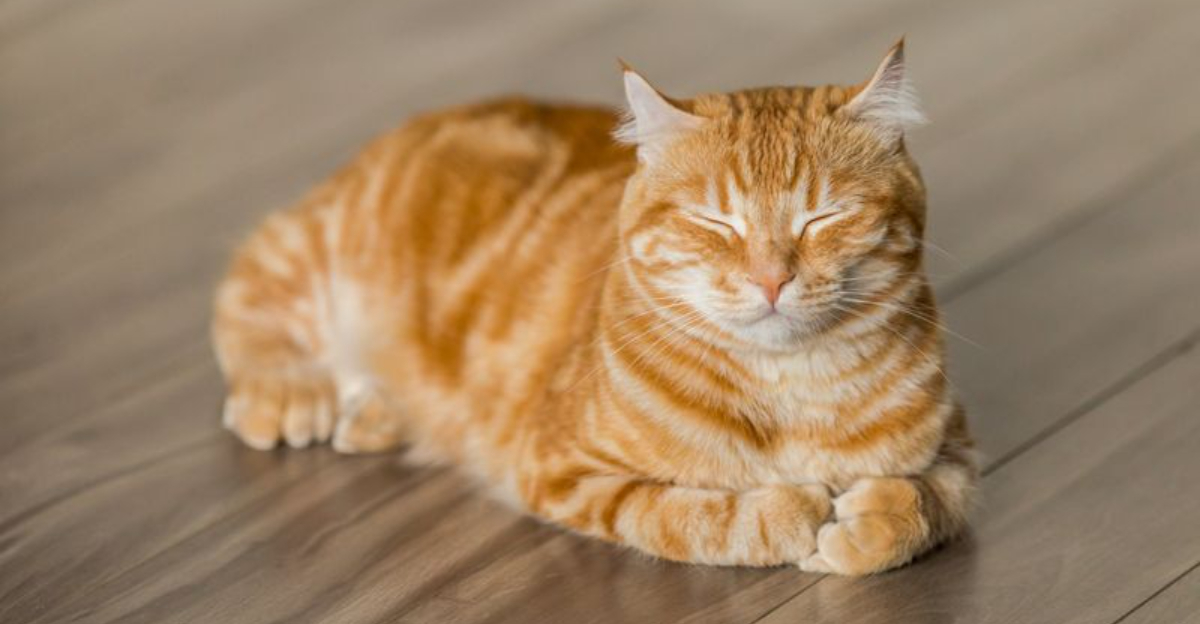
Ever noticed how cats have their own comfort rules? These independent furballs need special approaches when they’re anxious or upset.
Understanding how to calm your kitty without making them feel cornered is an art form that strengthens your bond. Let’s explore gentle ways to soothe your feline friend while respecting their personal space.
1. Create Elevated Safe Zones

Heights equal security in the feline world. Setting up cat shelves or clearing bookcase tops gives your kitty retreat options when they’re feeling overwhelmed.
The vertical escape route helps them regulate their own comfort level. When they can observe from above, many cats naturally calm themselves without human intervention.
2. Respect The Purr Pause
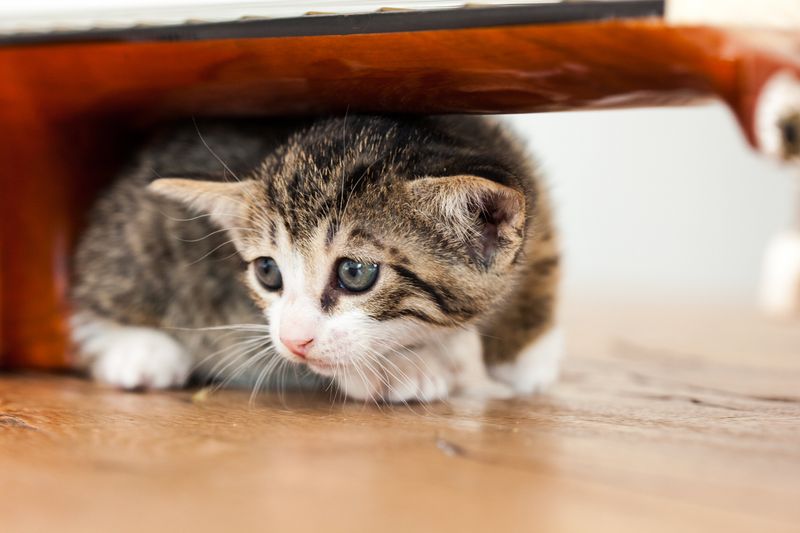
Contrary to popular belief, purring doesn’t always signal happiness. Sometimes it’s self-soothing when cats feel stressed or in pain.
If your cat retreats while purring, give them space rather than following. This respect for their coping mechanism builds trust gradually. They’ll seek your comfort when ready.
3. Slow Blinking Communication
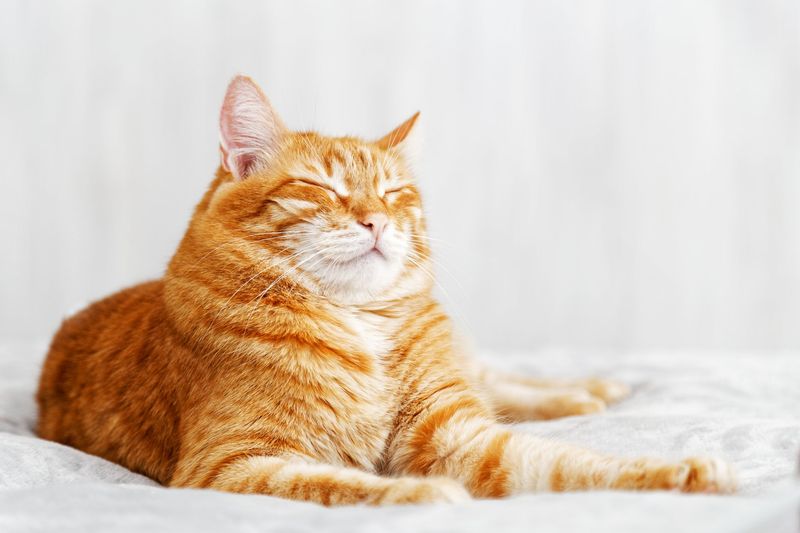
That dreamy, half-closed eye look isn’t your cat being sleepy – it’s love language! When your cat seems tense, try slow-blinking at them from across the room.
This non-invasive gesture tells them you’re not a threat. Many cats will respond with their own slow blinks, creating a peaceful connection without physical contact.
4. Scent Exchange Without Touch
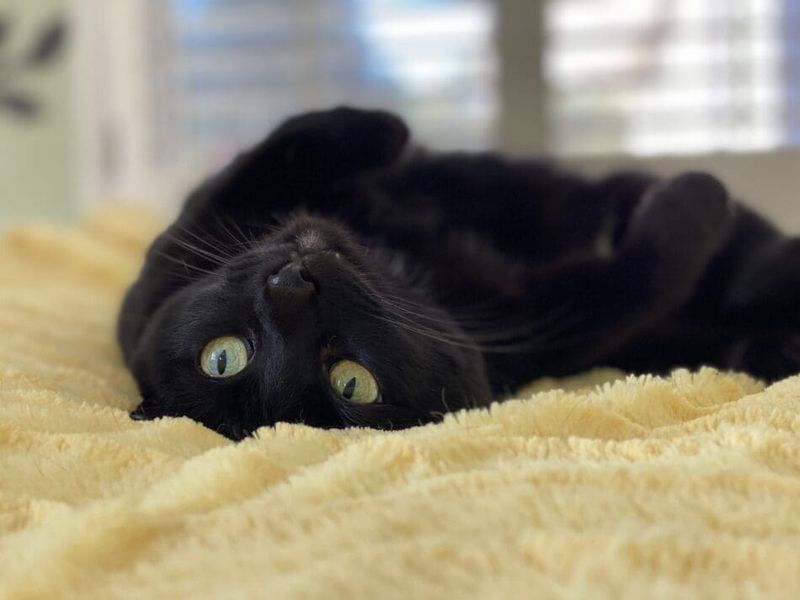
Scent carries powerful meaning in cat communication. Swap a sock you’ve worn with their favorite blanket, creating a comforting scent connection without physical contact.
This method works wonders for skittish rescues or during stressful events like moving. Your familiar smell provides reassurance while allowing them complete bodily autonomy.
5. The Calming Power Of Play
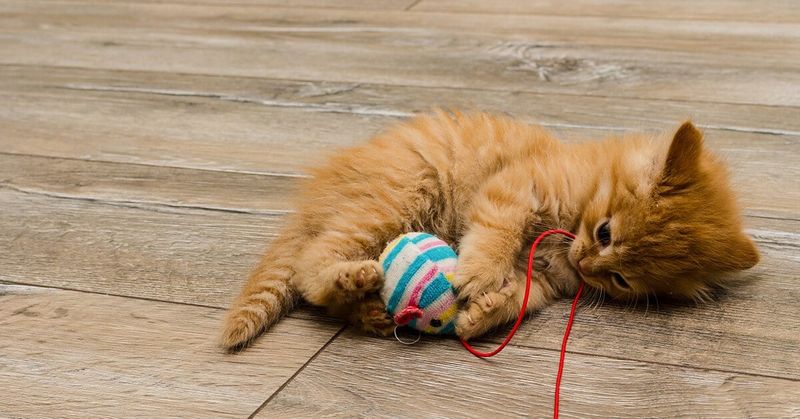
Wand toys with feathers or strings create distance while engaging natural hunting instincts. The beauty? Your cat controls their involvement level. Play naturally releases tension-busting endorphins.
Even a brief session redirects anxious energy into positive interaction. For especially nervous cats, try toys that move predictably rather than erratically.
6. Ambient Sound Therapy

Gentle background sounds mask startling noises that might spook your sensitive companion. Nature recordings featuring bird chirps often captivate feline attention in a positive way.
Classical music around 50-60 beats per minute has shown calming effects in studies. The consistent sound creates a security blanket without requiring direct interaction.
7. Strategic Treat Placement

Food speaks volumes in cat language! Placing treats at increasing distances from you builds positive associations without forcing interaction. This technique shines with shy cats who aren’t ready for hand-feeding.
The gradual approach lets them connect you with good things while maintaining their comfort zone. High-value treats like freeze-dried chicken work best.
8. The Magic Of Predictable Routines

Surprise isn’t a cat’s best friend! Establishing consistent daily patterns provides invisible comfort through reliability. Feeding, play, and quiet times at similar hours create security.
This schedule-based soothing requires zero physical contact yet significantly reduces anxiety. Your predictable behavior becomes their emotional anchor.
9. Proximity Without Pressure
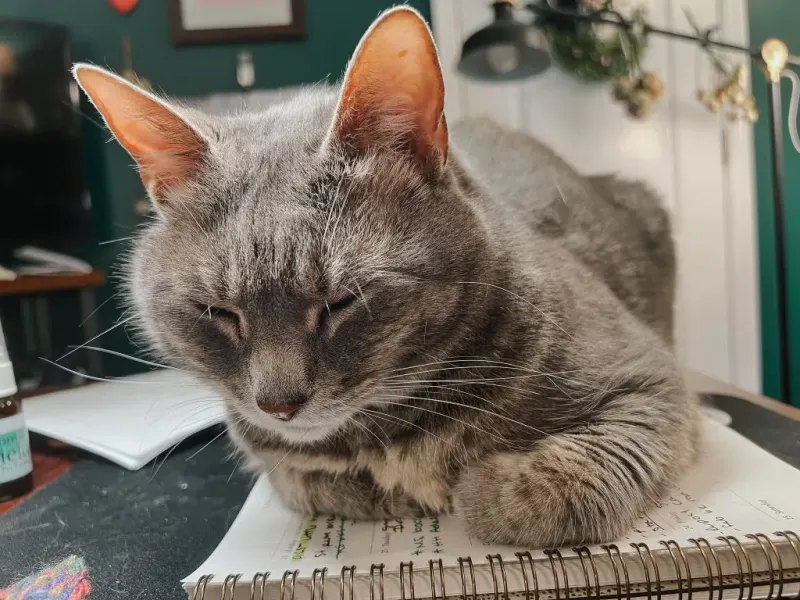
Simply existing nearby without demands works wonders for anxious felines. Reading a book while sitting on the floor several feet away removes the pressure of direct attention.
This passive companionship lets them investigate on their terms. Many cats will gradually decrease distance when they realize you’re not forcing interaction. Patience here builds tremendous trust.
10. Synthetic Calming Pheromones
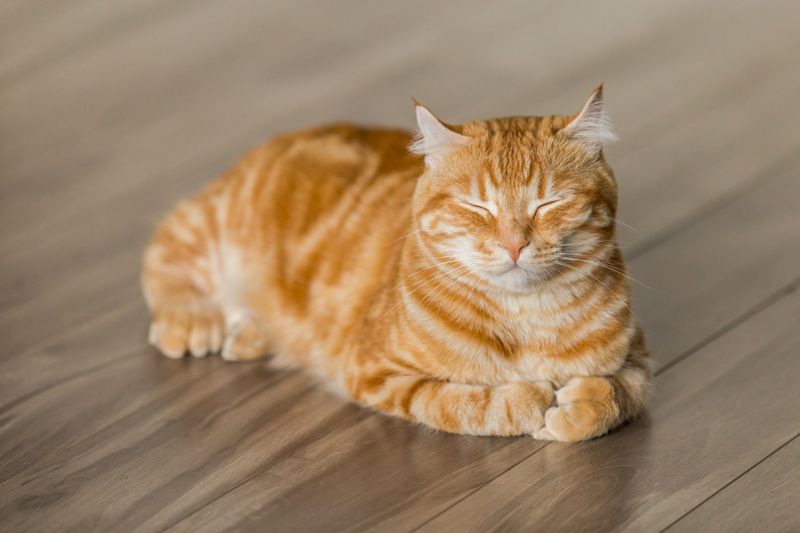
Synthetic calming scents can mimic natural signals that help cats feel safe and secure. Diffusers release these comforting cues into the environment, offering a hands-off way to ease stress.
They work by tapping into your cat’s instinctive sense of reassurance. For best results, set them up in your cat’s favorite spaces and give it a week or two to notice changes.
11. The Sideglance Approach

In cat language, a direct stare can come off as a threat. Instead, use soft, sideways glances to show you’re not being confrontational.
Occasional slow blinks can help reinforce your peaceful intentions and build trust over time. Once your cat feels truly at ease, they may even return your gaze on their own terms.
12. Brushing Their Territory

Grooming tools can bridge distances when used creatively. Brushing your cat’s favorite blanket or bed transfers their scent back onto their items.
This territorial reinforcement provides comfort without handling them directly. The familiar scent helps anxious cats feel more secure in their environment. As a bonus, it removes loose fur from their resting spots!
13. Calming Herb Gardens
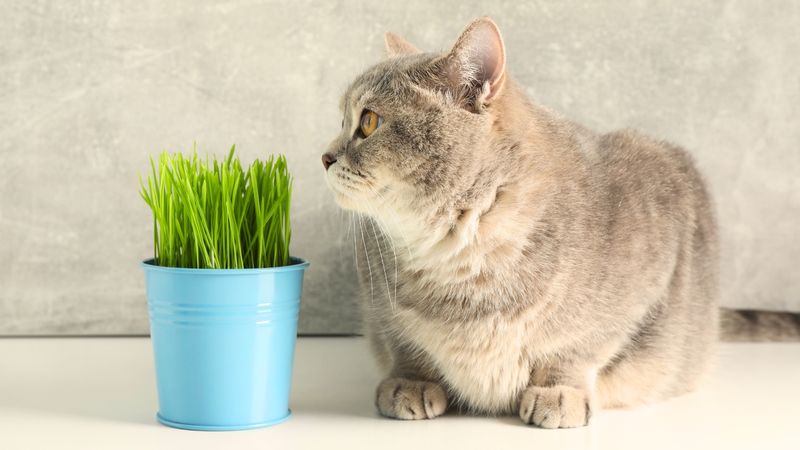
Silver vine and cat grass offer natural, non-invasive calming effects. Unlike catnip, which can overstimulate some cats, these alternatives often produce gentle relaxation.
Growing these plants in accessible pots lets your cat self-medicate when feeling stressed. The plant interaction provides sensory enrichment and distraction from anxiety triggers while maintaining their independence.
14. Cardboard Castle Comfort

Humble cardboard boxes transform into security bunkers in times of stress. Strategic placement of these hideaways around your home provides instant retreat options.
The enclosed space applies gentle pressure that naturally soothes. For extra calming power, line boxes with your worn clothing. These simple sanctuaries respect their need for occasional isolation.






